A built-in refrigerator cabinet is an elegant and functional addition to any kitchen, seamlessly integrating your fridge into the cabinetry for a sleek and cohesive look. Not only does it enhance the aesthetics of your kitchen, but it also provides additional storage space and allows for a customized, tailored appearance. In this article, we will delve into the art of making a built-in refrigerator cabinet, offering you a comprehensive guide on how to make a built in refrigerator cabinet.
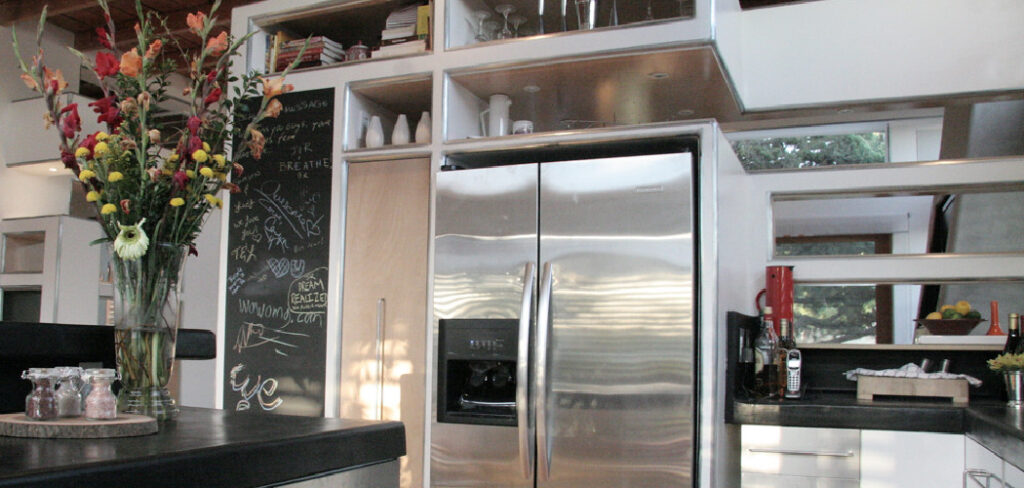
From design and planning considerations to selecting the right materials, building techniques, and finishing touches, we will cover every critical aspect of the process. Whether you’re a seasoned woodworker or a homeowner looking to upgrade your kitchen, understanding how to create a built-in refrigerator cabinet will help you achieve a seamless and stylish appearance that complements your overall kitchen design. Join us on this journey to transform your kitchen with a custom-built refrigerator cabinet, combining form and function for a truly refined culinary space.
Explanation of a Built-in Refrigerator Cabinet
A built-in refrigerator cabinet is a great way to seamlessly integrate your fridge into your kitchen design. It creates a custom and polished look, while also maximizing space in the kitchen. In this guide, we will go over how to make a built-in refrigerator cabinet step by step.
Materials Needed:
- Plywood sheets
- 2×4 lumber boards
- Wood screws
- Drill
- Saw
- Measuring tape
- Leveler
Determining the Refrigerator Size and Style
A built-in refrigerator cabinet is a great addition to any kitchen. It not only adds a sleek and modern look, but it also saves space by blending seamlessly into your cabinetry. However, before you can start building your own custom fridge cabinet, you need to determine the size and style of your refrigerator.
First, measure the space where you plan on installing the built-in refrigerator cabinet. Make sure to take into account the height, width, and depth of the space. This will help you determine the maximum size of your refrigerator that can fit into the designated area.
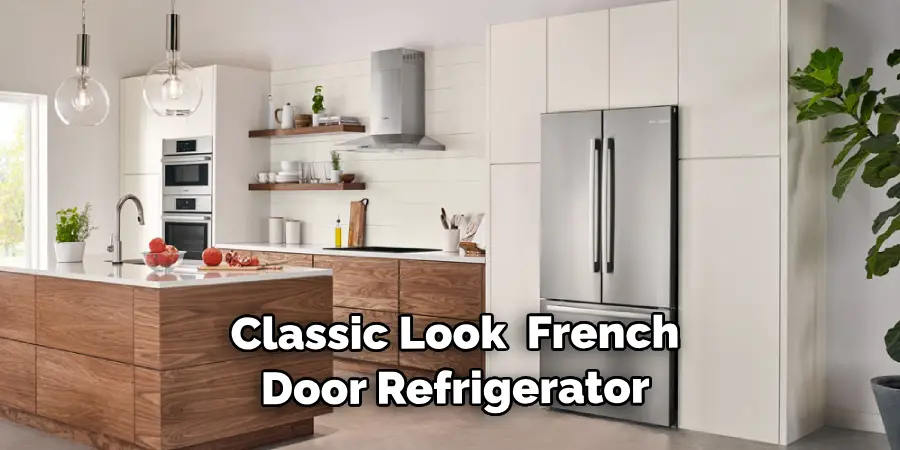
Next, consider the style of your kitchen and choose a refrigerator that complements it. For a more traditional or classic look, a French door refrigerator with bottom freezer drawers may be a good choice. For a more modern and streamlined look, a side-by-side refrigerator with a stainless steel finish may be the way to go.
It is also important to consider the capacity of the refrigerator. How many people are in your household? Do you frequently entertain guests or have family gatherings? These factors will help determine the appropriate size and capacity of your refrigerator.
10 Methods How to Make a Built in Refrigerator Cabinet
1. Measure the Space
The first step in creating a built-in refrigerator cabinet is to measure the space where the cabinet will be installed. This includes measuring the length, width, and height of the area and making sure that all measurements are accurate. It is also important to consider any existing features, such as windows or doorways, that may need to be taken into account when designing the cabinet.
2. Choose a Style
Once the measurements have been taken, it is time to choose a style for the built-in refrigerator cabinet. There are many different styles available, ranging from traditional to modern and everything in between. Consider factors such as how much storage space is needed and what type of look would best suit the overall aesthetic of the kitchen before making a decision.
3. Cut Plywood
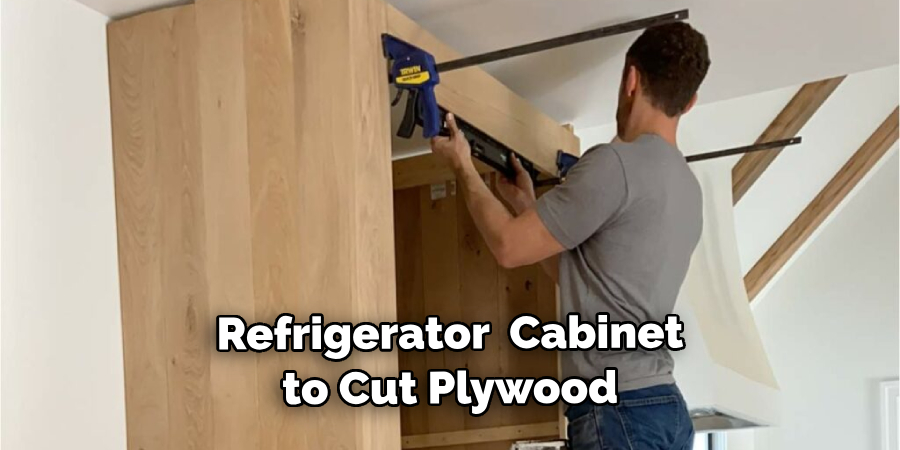
The next step in creating a built-in refrigerator cabinet is to cut plywood pieces for each side of the cabinet, including top, bottom, left and right sides. The size of each piece should match up with the measurements taken earlier in order to ensure that there will be no gaps or overhangs once it has been assembled.
4. Assemble Cabinet Box
Once all of the plywood pieces have been cut, they can then be assembled into a box shape using wood glue and nails. It is important to make sure that all edges line up perfectly before securing them together with nails or screws so that there are no gaps or uneven surfaces when it comes time for installation.
5. Add Shelf Supports
After assembling the box shape for the built-in refrigerator cabinet, shelf supports can then be added for additional storage space inside of it. These supports should be secured firmly into place using screws and wood glue so that they do not move around when items are placed on top of them later on down the line.
6. Install Doors & Drawers
Once all of these components have been put together, it’s time to install doors and drawers onto the face of the built-in refrigerator cabinet if desired. This can easily be done by attaching hinges onto one side of each door/drawer before screwing them into place on either side of the box shape created earlier in this process (left side versus right side). Make sure that all doors/drawers open smoothly before moving on to installation!
7. Attach Trim Pieces & Moldings
Trim pieces and moldings can then be attached around the edges of both doors/drawers as well as around the outside perimeter of the entire box shape itself in order to give it more character and depth than just plain plywood alone would provide otherwise!
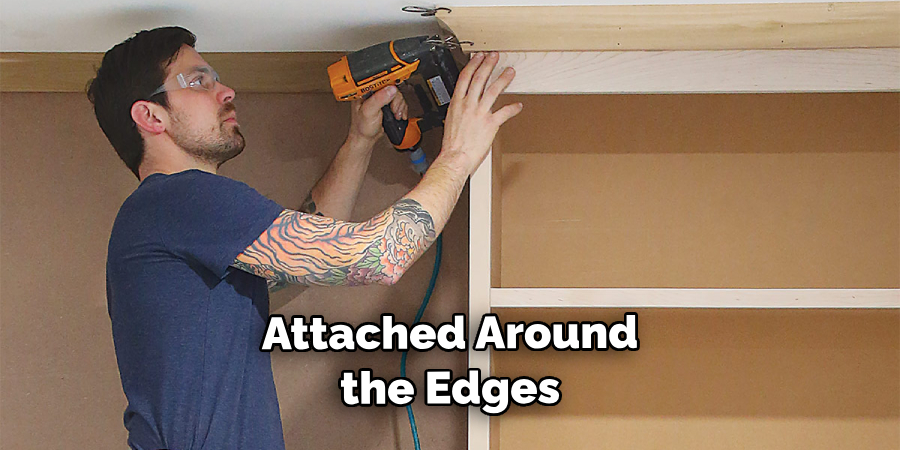
These pieces should also be secured firmly using wood glue and nails so that they do not come loose over time with use or movement within the kitchen area itself while being used daily basis by family members living within the home environment itself too!
8. Paint & Finish Cabinet Box
Once trim pieces/moldings have been attached securely into place onto the exterior surface area surrounding the entire box-shaped structure created earlier steps within this project’s process itself; now paint/finish entire cabinet box’s exterior surface area accordingly too! This could include anything from simple solid color paint jobs (such as white) all the way up through more ornate custom design patterns/textures depending upon the user’s own personal preferences here, too!
9. Install Refrigerator Unit
Now comes the part where the actual refrigerator unit itself gets installed within the prebuilt structure created throughout the above-mentioned steps within this project’s process already been completed thus far here, too! Depending upon the model chosen beforehand; most likely requires some sort of electrical cord running back out towards the wall outlet nearby so make sure to have those necessary tools ready prior to attempting this particular step here as well!
10. Final Installation & Clean Up
Last but not least; after having gone through above mentioned steps already outlined herein; now comes part where the final installation takes place along with any necessary clean-up afterwards too! Before actually putting the newly constructed unit back into position within the kitchen area itself though; double check once again make sure everything looks good from the outside perspective (i:e: no visible gaps between trim pieces etc.) before finally pushing unit back into position permanently now too!
Things to Consider When Make a Built in Refrigerator Cabinet
When creating a built-in refrigerator cabinet, there are several factors to consider in order to ensure that the end result is both functional and aesthetically pleasing. Here are some important things to keep in mind during the planning and building process:
Size and Dimensions
The first thing to consider when making a built-in refrigerator cabinet is the size and dimensions of your chosen refrigerator. It is important to measure the width, height, and depth of the fridge to ensure that your cabinet will fit snugly around it.
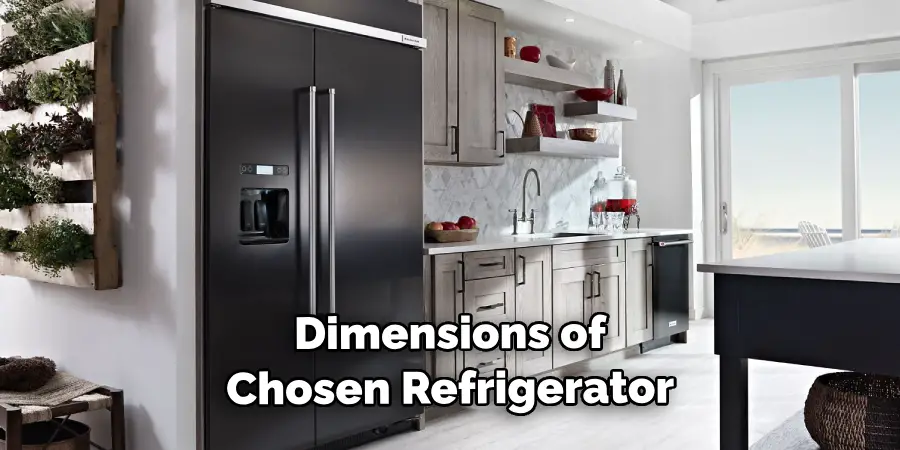
Ventilation
Refrigerators require proper ventilation in order to function efficiently. When designing your built-in cabinet, make sure to leave enough space for air to circulate around the refrigerator.
Material and Finish
The material and finish of your cabinet can make a big difference in the overall look and feel of your kitchen. Consider using materials that complement the existing cabinetry and décor in your kitchen, such as wood or metal.
Accessibility
When building a built-in refrigerator cabinet, it is important to consider how easily you will be able to access the fridge for cleaning or maintenance purposes. Make sure to leave enough space between the cabinet and the fridge for easy access.
Conclusion
In the end, you can proudly show off your brand new built-in refrigerator cabinet in all its custom made glory. From planning and prepping to installation and plenty of sweat, it truly was a labor of love, and definitely worth every moment. Now that you know how to make a built-in refrigerator cabinet, why not challenge yourself again?
Take on another indoor building project or give your outdoor space a makeover with some vibrant paint colors and furniture choices. When finished, share the result with us in the comments section! We’d love to hear about how you made the most out of coming up with new ways how to make a built in refrigerator cabinet. Good luck!
Professional Focus
Angela Ervin, a former interior designer turned blogger, specializes in kitchen design and renovations. Through her website, she blends her passion for cooking with design expertise, sharing practical and creative ideas. Known for balancing functionality and beauty, Angela’s insightful content has made her a trusted voice in home design and lifestyle.
About the Author
Angela Ervin, an experienced interior designer and blogger, combines her passion for kitchen renovations with storytelling. Living in Petersburg with her family, she enjoys cooking and testing her projects firsthand. Known for her humor and relatable style, Angela shares creative, functional design insights through her content, making her a trusted voice in home design.
Education History
University: Virginia Commonwealth University
Degree: Bachelor of Fine Arts (BFA) in Interior Design
- Angela’s education at VCU focused on mastering core interior design principles, including spatial planning, color theory, materials selection, and sustainable design practices.
- She gained hands-on experience through studio projects and collaborative design exercises, which honed her ability to create functional and aesthetically pleasing environments.
- Her coursework also emphasized problem-solving and practical applications of design, preparing her for real-world projects like her self-directed kitchen renovations.
- The program’s strong foundation in both technical skills and creative expression shaped Angela’s ability to seamlessly integrate form and function in her work.


